Questionhello,i hv a 10 months old yellow labrador and i m facing a lot of problems with him like while walking he pushes me a lot,whenver he sees any dog he pushes me towards that dog,whenever i go somewere out and come back he goes mad and jups a lot on me also whenever anyone comes he barks at them and pulls me towards them.what should i do with these problems?i want to eliminate all of dem totally away for him.please help me out in improving him.alo plase let me know as to till wat age will he misbheive?
AnswerHe will not grow out of those behaviors, but only get worse. The key to most behavior problems is approaching things using the dog's natural instincts. Dogs see all the people and dogs in the household as a pack with each having their own rank in the pack and a top dog. Life is much easier if the 2 legged pack members outrank the 4 legged ones. You can learn to play the role of top dog by reading some books or going to a good obedience class. A good obedience class or book is about you being top dog, not about rewarding standard commands with a treat.
You should stay with a flat fabric or leather collar until your puppy is 5 months old. Then you can go with the metal slip collar with the rings on each end. Otherwise you could damage its windpipe. Put it on like this for the usual dog on the left position. Pull the chain through the one ring forming a "P". Facing the dog, slip it over its head. The free end comes over the neck allowing the other end to release pressure when the leash is slack. A five month old's head will still grow some. If you buy one that easily goes over the head, it still should come off leaving the ears when the dog finishes growing. You need a good 6' leather leash, although you may not want to give a young puppy a chance to chew it.
Easier dogs will give up their pulling with a few good snaps of the leash combined with a stern "Bad dog!". You can work up to forceful corrections with the leash doubled up in both hands and your whole body behind it. But you don't want to use any more force than you need. One gentle technique I like is to just stop when he pulls. He wants to go. If you move forward when the leash is slack, and stop when he pulls, he should quickly figure out the only way to get to go, is not to pull. This is about teaching him not to pull, not getting somewhere. The man that taught it to me said "If in a half hour you haven't made it out to the front walk, fine, you have taught him a lesson. Pulling the dog backwards is a good technique too.
Still, you may want to switch to a head collar. The leading brands are Promise, Haltie, and Gentle Leader. They have a strap going around the dogs nose looking something like a muzzle. They work by pulling the dogs head around. No other way gives you such great control with so little force. The prong collar is now a dangerous relic of value only for its macho looks. Do not consider using one without hands on instruction from somebody with plenty of experience with thYou should stay with a flat fabric or leather collar until your puppy is 5 months old. Then you can go with the metal slip collar with the rings on each end. Otherwise you could damage its windpipe. Put it on like this for the usual dog on the left position. Pull the chain through the one ring forming a "P". Facing the dog, slip it over its head. The free end comes over the neck allowing the other end to release pressure when the leash is slack. A five month old's head will still grow some. If you buy one that easily goes over the head, it still should come off leaving the ears when the dog finishes growing. You need a good 6' leather leash, although you may not want to give a young puppy a chance to chew it.
Easier dogs will give up their pulling with a few good snaps of the leash combined with a stern "Bad dog!". You can work up to forceful corrections with the leash doubled up in both hands and your whole body behind it. But you don't want to use any more force than you need. One gentle technique I like is to just stop when he pulls. He wants to go. If you move forward when the leash is slack, and stop when he pulls, he should quickly figure out the only way to get to go, is not to pull. This is about teaching him not to pull, not getting somewhere. The man that taught it to me said "If in a half hour you haven't made it out to the front walk, fine, you have taught him a lesson. Pulling the dog backwards is a good technique too.
Still, you may want to switch to a head collar. The leading brands are Promise, Haltie, and Gentle Leader. They have a strap going around the dogs nose looking something like a muzzle. They work by pulling the dogs head around. No other way gives you such great control with so little force. The prong collar is now a dangerous relic of value only for its macho looks. Do not consider using one without hands on instruction from somebody with plenty of experience with them.em.

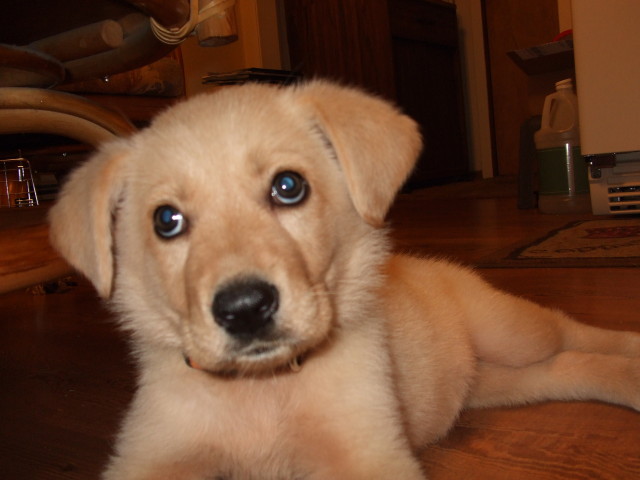 Young pup drinks too much
Question
Hi, Im Roxy & I have
I recently adopted a
Young pup drinks too much
Question
Hi, Im Roxy & I have
I recently adopted a
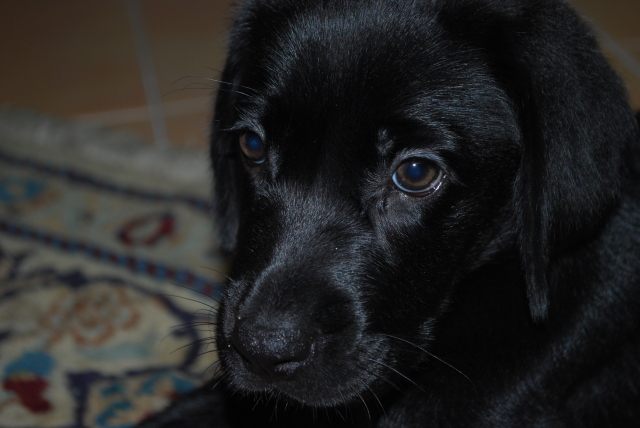 Labrador behaviour
Question
Gordie
Name: Gordie
Age: 4 months
Sex: Male
N
Labrador behaviour
Question
Gordie
Name: Gordie
Age: 4 months
Sex: Male
N
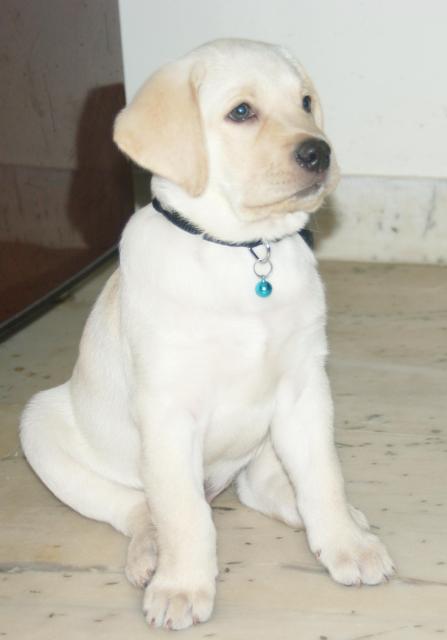 Need opinion about my Labrador Retriever
QuestionCoco (Labrador Retriev
QUESTION: I have
Need opinion about my Labrador Retriever
QuestionCoco (Labrador Retriev
QUESTION: I have
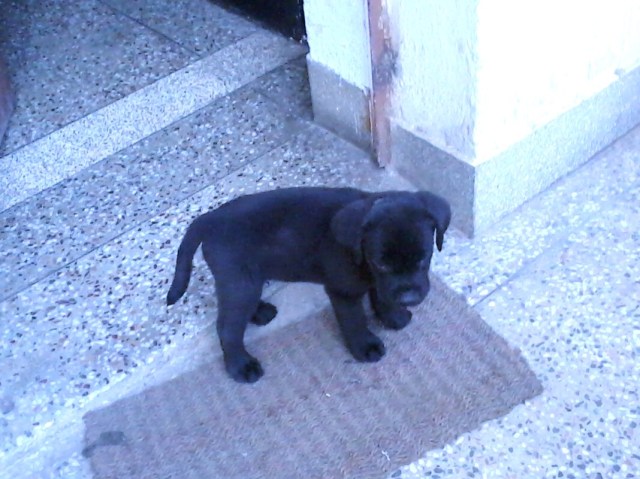 labrador diet
Question
striker
i have a black male Labrador of 4 mont
labrador diet
Question
striker
i have a black male Labrador of 4 mont
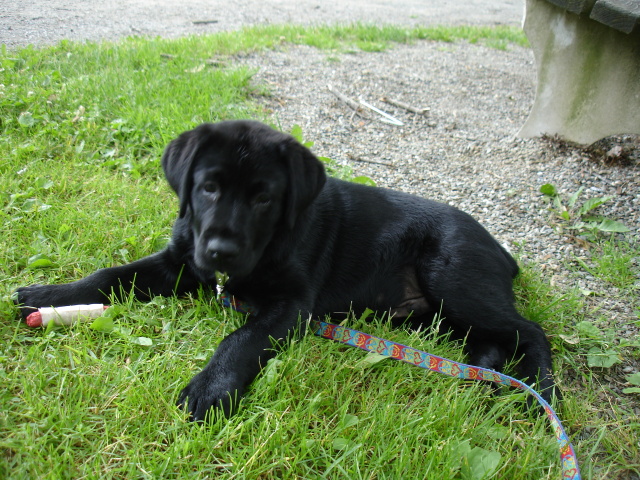 Is my lab puppy growing to fast?
Questionjust hanging out!
QUESTION: I recently t
Is my lab puppy growing to fast?
Questionjust hanging out!
QUESTION: I recently t